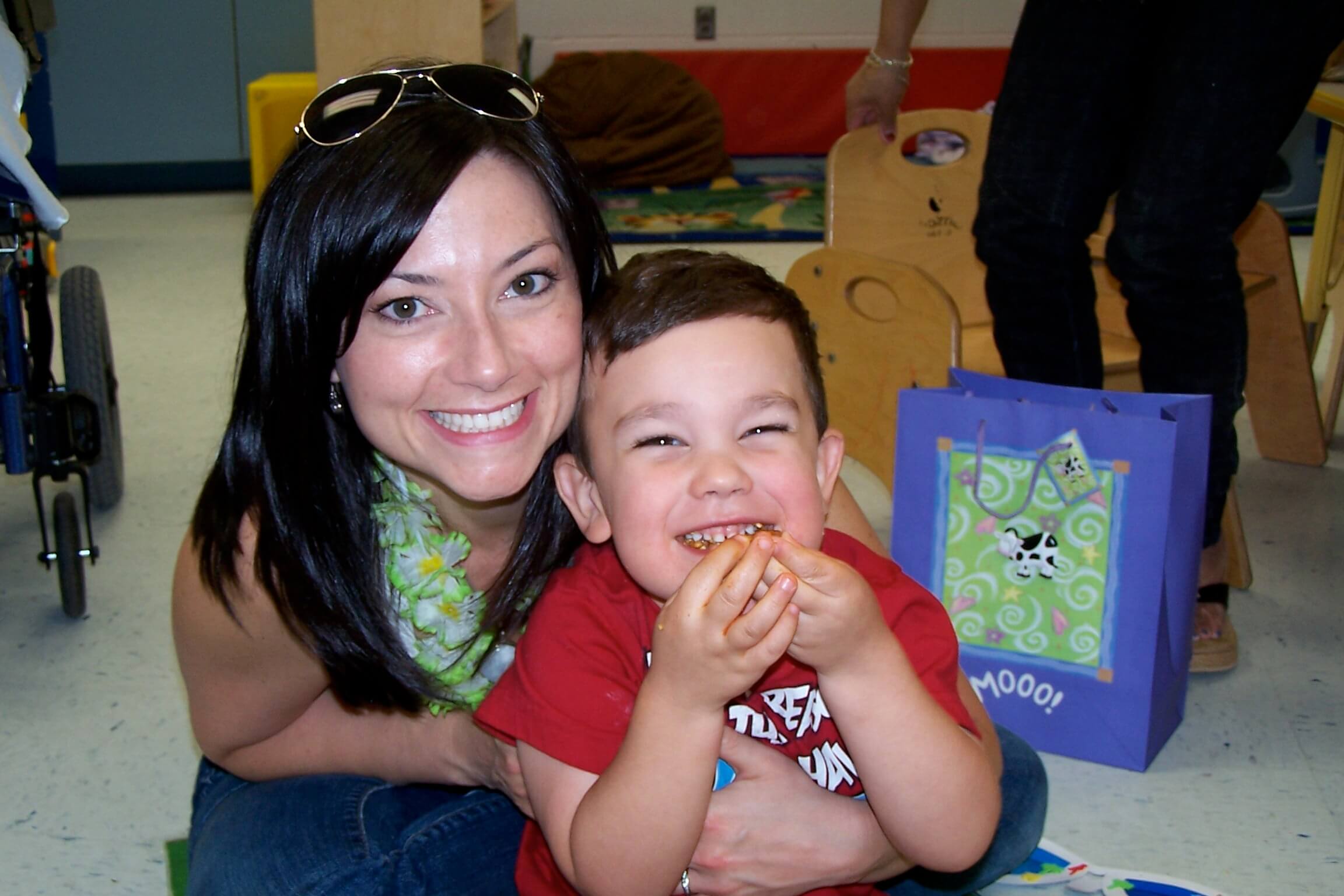A critical incident is defined as an extraordinary event that has the potential to cause unusually strong emotional reactions.[1] Examples of critical incidents include, but are not limited to, being threatened with aggression, news of a significant medical diagnosis (for yourself or a loved one), or a job loss.
During a critical incident, our coping skills can go right out the window, though many factors contribute to how an individual responds to critical incidents in the moment, including the number and type of incidents the person has experienced, their internal and external resources and their perceived and actual plan for moving forward.
Dealing with critical incidents is very important for caregivers of individuals with Fragile X syndrome, particularly biological mothers. Unfortunately, critical incidents occur frequently for many caregivers of children with FXS. Behavioral outbursts and aggression are critical incidents that take place in the home or in the community. For biological mothers of children with FXS who carry the premutation gene, there is the added predisposition to anxiety, as well as other emotional concerns, which can amplify their response to these critical incidents.[2]
Anxiety
Anxiety is a complicated construct, and for the purposes of this article warrants a bit of additional clarity. There are many symptoms that are associated with anxiety, including but not limited to worry, jitteriness, sweating, and increased heart and breathing rates.
Mothers of children with FXS who carry the premutation gene have a distinct biological profile that is often associated with increased anxiety. Research has found that mothers of children with FXS self-report higher levels of stress and have higher waking levels of cortisol than their peers without children with FXS. This highlights that from the start of the day, mothers of children with FXS are already experiencing more of the physical symptoms associated with stress, and as previously stated caregivers of individuals with FXS experience significant numbers of critical incidents that are stress-inducing. So how can mothers manage their stress and manage the critical events during caregiving?
Critical Incident Stress Management (CISM)
The past 30 years have yielded a great deal of research on how to address critical incidents: those sudden, unexpected events that stretch our natural coping mechanisms. This intervention was originally conceived in the 1980s for emergency personnel, but it is relevant here because a Mother’s Day with a child with FXS is anything but routine.
The term “critical incident stress management” was introduced in 1997 as an expanded approach that specifically addressed pre-incident, acute-incident, and post-incident stages. This is a method of supporting individuals before, during, and after a traumatic event, with the primary purpose of reducing the initial stress reaction and preventing subsequent psychological impact. The continued use and research of CISM serves to support its effectiveness with populations exposed to critical incidents.
The first stage in CISM involves pre-incident education, which may be particularly helpful for mothers of individuals with FXS. The pre-incident plan is created and helps individuals set expectations for eventual critical incidents, provides ideas on how to handle the incident, and creates plans for follow-up coping and stress management. This step can greatly alleviate anxiety as it is proactive, provides the individual with a sense of control, and in some cases can actually serve to address the antecedents of behavioral incidents, which may stop the behavior before it occurs.
During the incident, the mother will hopefully attempt to use the ideas developed during the pre-incident planning. This may serve to shorten the incident and keep those involved, physically safe.
The post-incident component of CISM is centered around debriefing for the individual involved, which can serve as a means of providing mothers with an exploration of the anxiety, and feelings of guilt, shame, isolation, and loneliness that can arise after critical incidents. By using this intervention, which may be immediate or as soon as the mother is ready, mothers may experience greater psychological well-being. Further benefit comes from the CISM focus on stress reactions and continued symptom monitoring or referral for higher-level psychological care. With a focus on immediate (defusing and debriefing) and long-term support, CISM is a model that has great potential for mothers of children with FXS.
Implementation
Although this sounds promising, and certainly appears applicable, the next question would involve implementation within the daily life of the family. The first step would be to find someone to work with on the process. This could be a therapist, counselor, behavior specialist or another professional, but could also be a spouse or close friend.
The initial work would involve the pre-incident preparation, to frame the potential antecedents of an event and to assist in creating interventions and systems to prevent the occurrence.
The next step is to think through the “what ifs.” Discussing what can be done if one of these critical incidents occurs is very important. It provides the individual with a plan of sorts and establishes a process for seeking support both in anticipation of and following an incident.
Examples:
- Unexpected transitions — use visuals, allow time and talk the child through it.
- Perseverative speech — use visuals, a sensory diet, ample time to transition, calming activities.
- Have a backup plan — if the child does not calm down or becomes aggressive, leave the room.
Finally, it is very important to pursue support and guidance following a critical incident. This debriefing is critical for framing the event and for the process of moving forward. The debriefing literature also suggests that a one-shot approach to debriefing might allow the person to feel better in the short term, but ongoing support is considered best practice.
It is important to note that there is nothing in the literature that suggests that the same person needs to be involved in all aspects of CISM so there might be one person that is involved in helping to create the pre-crisis plan and another that will serve as support for the subsequent phases.
It can also be important to debrief with the child. This is unique to each child and will be dependent on what aspects they can understand and the reinforcers of the behavior. It will often still rest with the mother to determine the antecedents and the associated behavior. If the purpose of the behavior is attention seeking then a long debrief would not be recommended as this could reinforce the behavior. Again talking with someone about this would be important.
Summary
Mental health support is crucial, particularly when dealing with critical incidents. For a population that is organically predisposed to anxiety, coupled with exposure to critical events and in many situations a limited social network, the need for mental health support is clear and CISM appears to be an approach that can be effective.
Interestingly, given the amount of evidence documenting the challenges that mothers of children with FXS face, there is very limited psychological research exploring treatment options or how best to support this community. This is a significant gap in the literature and more efforts to understand this unique group of individuals are needed. Further research could provide clarifying information for mothers of children with FXS, mothers who carry the premutation gene and for clinicians who may not know how to evaluate for or treat some of the unique challenges associated with FXS. In summary, it is important to keep these principles in mind when dealing with critical incidents that occur on a regular (or not so regular) basis and to seek the support of mental health providers and peer support networks as a means of self-care and in an effort to be as available and as effective as possible for our children and families.







